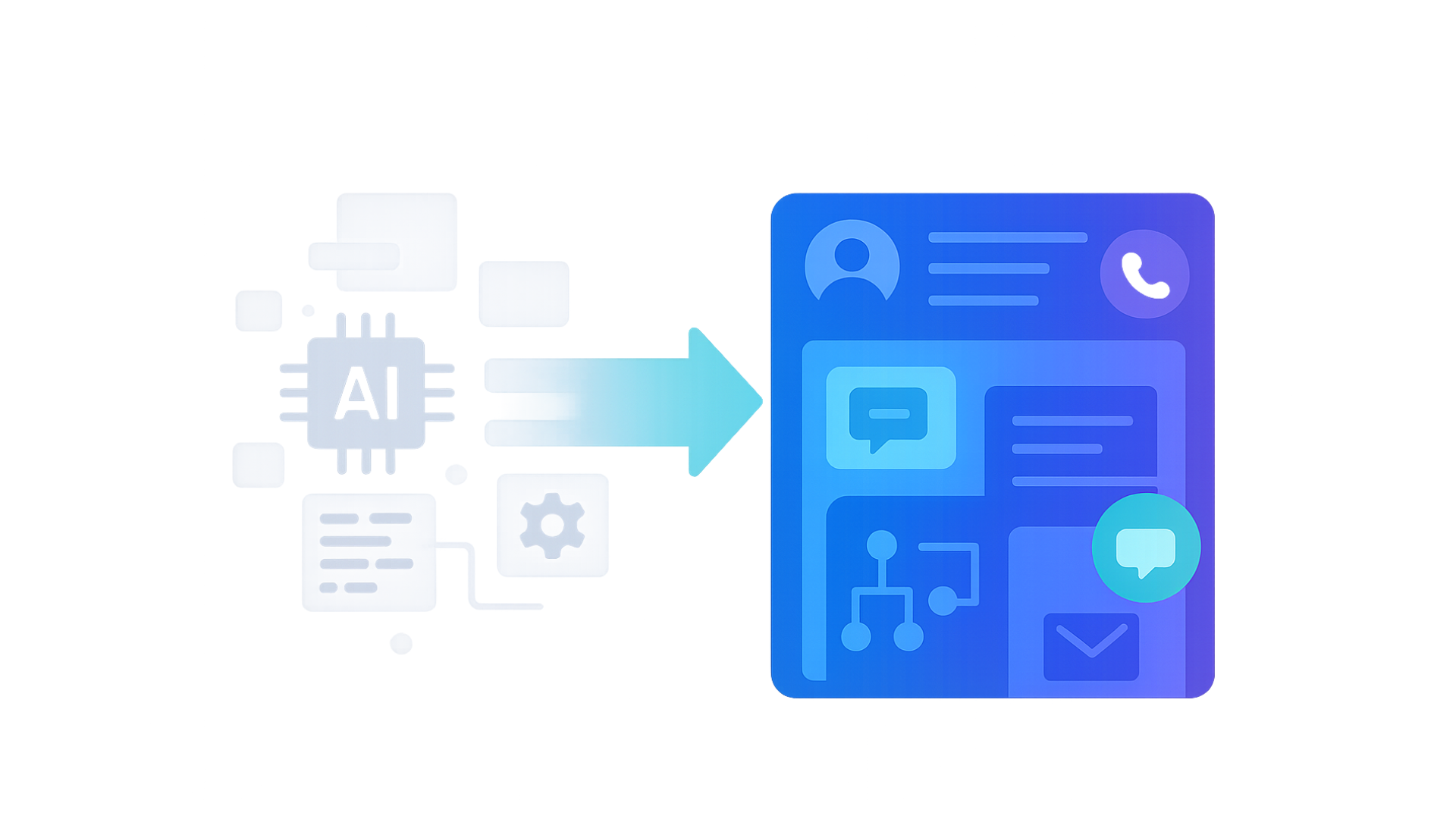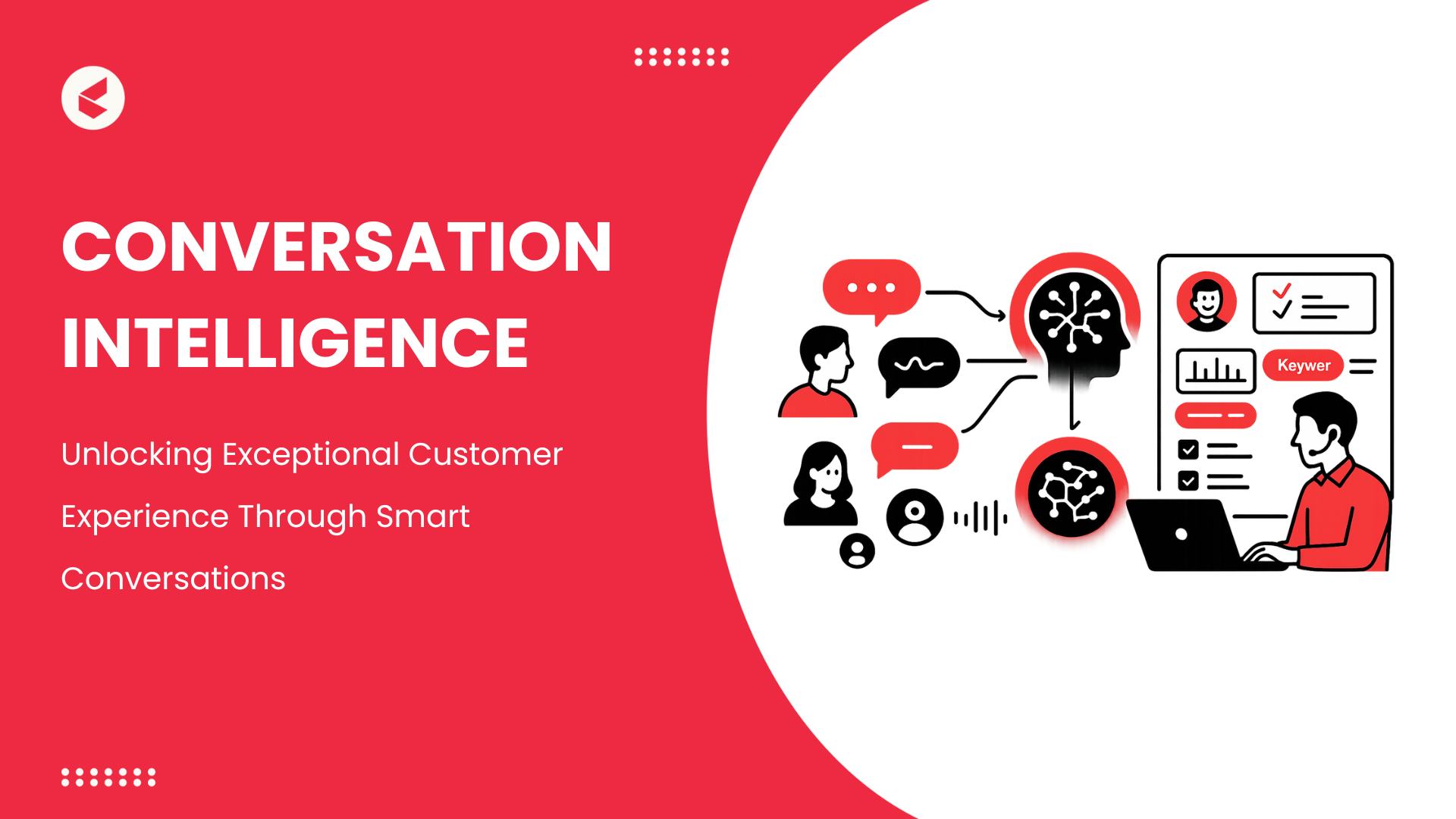Companies are flooding their contact centers with chatbots, self-service portals, and automation platforms. The headline ambition is simple: fewer calls, lower cost, and faster resolutions.
But the people holding those systems together are overlooked. Frontline agents are the ones building bridges between broken workflows and frustrated customers, yet they often get left behind.
What we call agent experience debt is the hidden drag on automation. It builds gradually through scattered systems, outdated knowledge bases, and fragmented training. The result is slower resolutions, inconsistent handoffs, and growing frustration on both sides of the conversation. Even small gaps in enablement can quietly reduce the gains from automation.
Automation performs best when agents are equipped to act fast, with the right context and confidence. Without that foundation, outdated tools and scattered workflows hold back what automation was designed to achieve.
In the sections ahead, we’ll examine how agent experience debt manifests inside modern service organizations, why it grows despite investments in AI and workflow automation, and how forward-thinking CX leaders are addressing it.
What Is Agent Experience Debt?
Developers use the term technical debt for what happens when projects prioritize speed over structure. The deadline is met, but the team pays for it later through fixes and maintenance.
Customer experience faces its own version of this. When automation evolves faster than agent enablement, it leaves a growing divide between tools and people. That divide becomes agent experience debt: a slow buildup of friction that adds workload, reduces efficiency, and limits how much automation can truly deliver.
Each new tool or bot adds more complexity, yet agents often manage them with outdated systems or inconsistent training. Agents lose time switching screens, searching for information, and rebuilding context that automation fails to pass along.
How It Shows Up in Daily Work
- Fragmented Interfaces – Agents move between CRMs, chat logs, ticketing tools, and knowledge bases without a unified customer view. Every switch disrupts focus and wastes time.
- High Cognitive Load – When escalations lack background detail, agents spend valuable time piecing together what happened. The mental strain of switching between systems and guessing context increases stress, especially for less experienced or undertrained agents.
- Missing AI Context – Some bots move cases to agents without including what the customer said or what’s already been tried. The agent then has to rebuild the thread from memory, adding extra steps and frustration for both sides.
- Limited Readiness for Exceptions – Automation handles routine tasks, but when complex or emotional cases arise, agents may not have the tools or training to respond effectively.
- Weak Handoff Points – Poorly linked systems create duplicate work and confusion about ownership. Customers end up repeating information, and first contact resolution declines.
Why It Matters
Research from Harvard Business Review Analytic Services found that 87% of business leaders see a clear link between employee experience and customer experience. For contact center agents, that link is immediate. They shape how customers feel with every interaction. When scattered systems or broken workflows slow down agents, customers sense the frustration.
Agent experience debt builds that friction into daily work. It chips away at focus, confidence, and patience, the qualities that keep service strong. Eventually, responses slow down, quality suffers, and morale dips, shaping how customers see the brand.
What begins as a technical gap often turns into a human one. Agents caught between disconnected tools and rigid automation struggle to stay engaged and empathetic. As that strain builds, the customer experience weakens with it. Fixing agent experience debt starts with giving agents the right tools, context, and support to perform at their best.
How It Creeps In: Common Sources of Agent Experience Debt
Agent experience debt often builds quietly from everyday choices that seem harmless at first. Here are the most common sources.
1. Legacy CRMs and Disconnected Systems
Agents often use several platforms to manage one customer case. They check the CRM, review ticket notes, scroll through chat history, and dig through the knowledge base. Each switch slows the process, and without a unified view, the delays quickly build into lost time.
2. Reactive Automation Without Feedback Loops
Many organizations introduce bots or self-service tools to handle rising volumes quickly. When this happens without input from agents, those systems lack real-world insight into customer needs. Without feedback loops, bots repeat the same mistakes, and agents end up spending time fixing what automation should have prevented.
3. Misaligned KPIs
When metrics reward speed and ticket closure over quality and satisfaction, agents naturally focus on finishing fast rather than solving thoroughly. That focus may reduce handle time, but it often leads to repeat contacts and lower customer trust.
4. Lack of Contextual Data During Escalations
A common pain point occurs when a case escalates from automation to a live agent without sharing enough background. The agent receives the customer’s name but not the full story of what was attempted or where the process failed. Rebuilding that context wastes time and energy that could have gone into resolution.
Why It Hurts CX Automation ROI
Agent experience debt may start with agents, but it ends up hurting automation itself. When the people behind the system slow down, escalations rise, and the value automation was meant to create begins to fade.
1. Agents Become Bottlenecks
Cases that reach agents without the full picture take longer to resolve. The missing context forces agents to repeat steps and retrace conversations. As a result, Average Handle Time (AHT) rises, First-Contact Resolution (FCR) falls, and Customer Satisfaction (CSAT) drops.
2. The AI Learning Loop Breaks
Automation only improves when agents feed their insights back into the system. Without these feedback loops, the same mistakes repeat, and the automation layer stops learning. Handle times stay high, and metrics like FCR and CSAT stop showing real progress.
3. Increased Attrition
When agents juggle disconnected systems and keep fixing the same issues, the job starts to wear them down. Fatigue builds into burnout, and many eventually leave. New agents need weeks of training to catch up, increasing the cost-to-serve and reducing overall capacity.
4. Reduced Adaptability and Scalability
Automation can scale effectively only when agents are equipped to handle complex or unusual scenarios. When that support is missing, advanced automation rollouts stall, and human teams end up managing more of the work manually. This limits flexibility and keeps AHT and FCR from improving at scale.
Measuring and Mapping Agent Experience Debt
Before you can fix agent experience debt, you need to measure it. Tracking a few simple indicators helps identify where friction exists and how deeply it affects operations.
Diagnostic Checklist
- Agents Using Multiple Tools Per Interaction – Check how many systems an agent uses for a single customer case. Each extra tool adds effort and raises the chance of error.
- Average Clicks to Resolution – Count the number of clicks and screen changes between ticket creation and closure. Fewer clicks usually mean smoother workflows and faster handling.
- AI to Agent Context Transfer Rate – Measure how often escalations include complete history, attempted actions, and reasons for failure. Missing context forces agents to start from the beginning each time.
- Agent Sentiment and Burnout Scores – Use short surveys and track attrition trends. Rising stress or lower engagement often points to growing friction in everyday work.
Why It Matters
Traditional service level agreements measure speed and availability. Experience Level Agreements (XLAs) go further by focusing on how the work experience actually feels for agents and customers.
They capture usability, effort, and perceived quality, showing where processes may meet targets but still create strain. Using XLAs alongside metrics such as AHT, FCR, CSAT, and training time gives a more realistic view of performance.
Paying It Down: Strategies to Fix Agent Experience Debt
Once you know where the debt exists, the next step is to rebuild the agent environment so that automation and people can improve together. The strategies below help create that balance.
1. Unify Interfaces into a Single Pane of Resolution
Put CRM, ticketing, chat, and knowledge tools in one place. When agents don’t have to shuffle between systems, they stay focused and solve issues faster.
2. Introduce AI Copilots for Real-Time Guidance
Give agents AI Copilots that remember what’s already happened, highlight key details, and suggest the next best step. It makes their work smoother and keeps responses quick and accurate. This steady guidance cuts down on effort and helps them work faster and more accurately.
3. Strengthen Training and Quality Assurance
Consistent training keeps agents grounded and prepared for change. Regular QA checks make sure quality stays high, while coaching sessions help fill gaps and build trust in using automation day to day. Insights from QA can also feed back into automation models so that systems learn from real conversations and improve with time.
4. Build Observability for Agent Workflows
Track how agents move through tools and processes just as closely as automation performance. Recording clicks, searches, and handoffs reveals friction points that can be simplified.
5. Reframe Metrics Toward Experience-Led Productivity
Balance operational goals with experience-focused ones. Measure how efficiently agents work and how easy it feels to do their jobs. Pair standard metrics like AHT, FCR, and CSAT with indicators of agent effort and satisfaction for a clearer picture of productivity.
The Future: From Agents to AI-Enhanced Experts
The agent’s role has evolved. They now guide automation and strengthen its performance instead of managing every request themselves. AI takes over repetitive tasks, freeing agents to focus on moments that require empathy, context, and complex decision-making.
As this shift takes shape, agents are also becoming supervisors of AI. They monitor automation, correct it when needed, and feed back insights that help systems improve. Each interaction becomes a two-way learning loop where technology and people get better together.
Companies that design for both agent and AI experience gain an edge. When tools work together and guidance happens in real time, automation scales more smoothly. Agents gain confidence, and every interaction becomes easier to handle.
The outcome is a system that learns faster, teams that work better, and a customer experience that feels both personal and consistent.
Closing: How Kapture CX Helps Eliminate Agent Experience Debt
Every automation strategy eventually reaches a point where technology alone cannot deliver more. The real challenge lies in how agents experience their tools. When systems are scattered or support feels inconsistent, effort increases, and automation returns begin to fade.
Kapture CX closes the gap between automation and the people who run it. Its Unified Workspace pulls CRM data, chat history, and knowledge into one screen, cutting down on context switching and lost time.
AI copilots help agents stay a step ahead by summarizing interactions, suggesting next moves, and filling in routine responses. Every conversation feeds into Post-Interaction Intelligence, turning daily work into insights that keep both automation and agent performance improving.
Agents work with less effort, feel more confident, and deliver better outcomes. Automation scales smoothly, ROI holds steady, and customer experience becomes more consistent.
Book a personalized demo today and discover how to eliminate agent experience debt for good.













